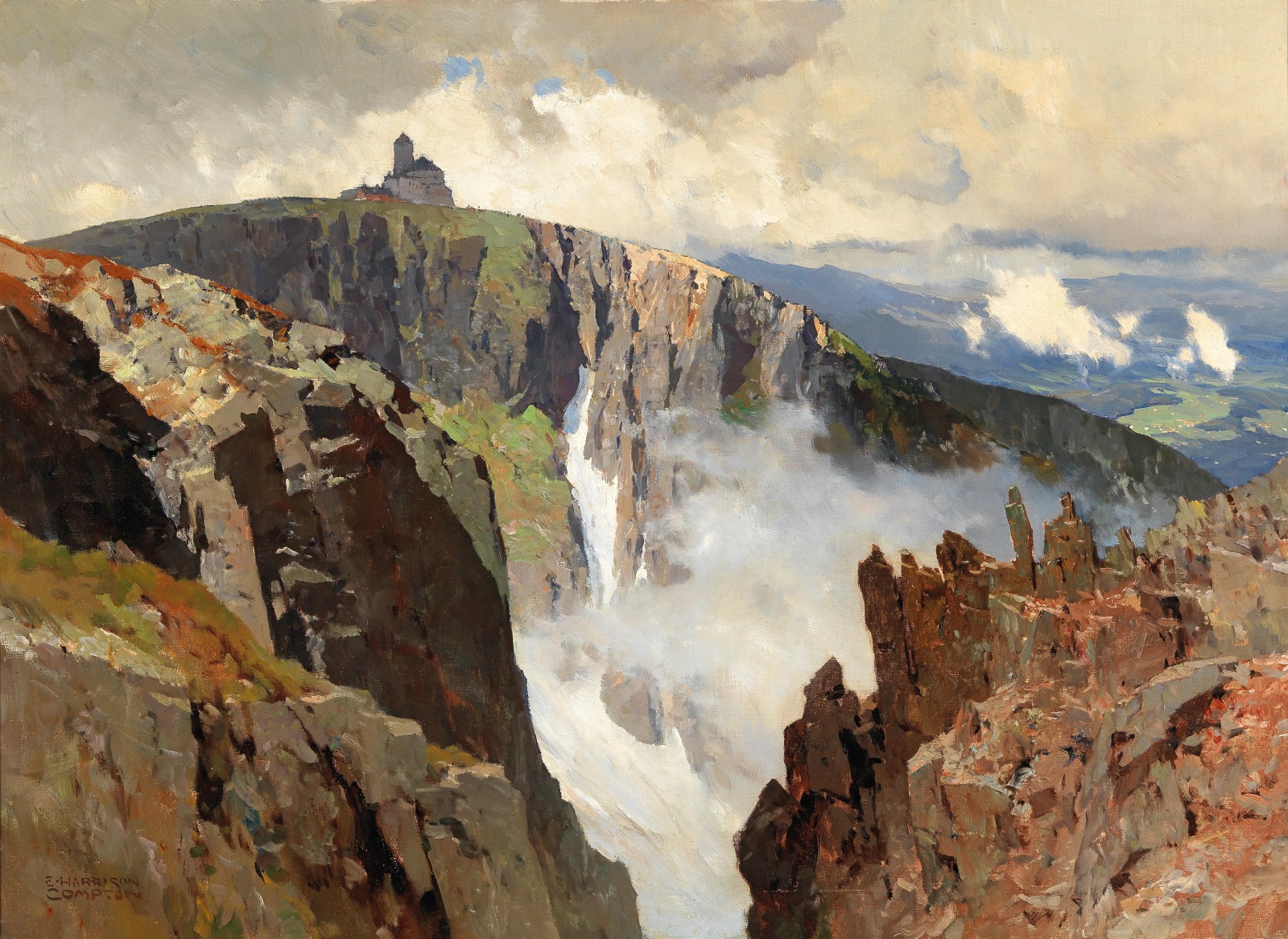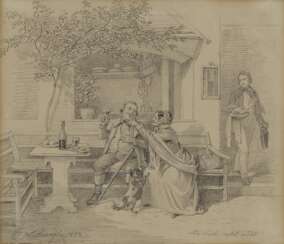
Graphics 19th-20th century — Graphics and paintings

William Etty was an esteemed English painter renowned for his history paintings, especially those containing nude figures. He was recognized as the first significant British artist to focus on nudes and still lifes. Despite facing criticism for the perceived indecency of his work, William Etty achieved both commercial success and critical acclaim, particularly after his painting "Cleopatra's Arrival in Cilicia" in 1821, which showcased his skill in painting realistic flesh tones.
William Etty's journey in art began after he completed an apprenticeship in printing, moving to London to join the Royal Academy Schools in 1807. There, he was influenced by the works of Venetian artists and the teachings on history painting, emphasizing the works of Titian and Rubens. By 1825, his reputation was solidified with his election as a Royal Academician, a testament to his success and impact on the art world.
His works, often focused on mythological or historical subjects, are celebrated for their sensuous portrayal of the nude form. Despite facing backlash for his subject matter, William Etty remained a popular figure throughout his life. His legacy lives on in collections like the York Art Gallery, which holds a significant number of his pieces, reflecting his dedication to painting, particularly the human figure in its most natural form.
For art collectors and experts, William Etty's oeuvre offers a unique exploration of the nude form, blending historical and mythological narratives with lifelike realism. If you're interested in learning more about Etty's work and staying updated on exhibitions or sales featuring his paintings, consider subscribing for updates dedicated to his artistry. This subscription will keep you informed about new discoveries, auction events, and exhibitions related to William Etty's enduring legacy.

Carle Vernet, born Antoine Charles Horace Vernet, was a French painter, draughtsman and lithographer.
He was the son of the famous landscape painter Claude Joseph Vernet (1714-1789) and studied painting with his father and then in Italy. Under Napoleon I, Vernet painted battle scenes and later became court painter to Louis XVIII. Vernet successfully depicted hunting and domestic scenes of Parisian life. However, the main focus of his work was horses, races and equestrian battles.
Charles Vernet was the father of the famous battle painter Oras Vernet (1789 - 1863).

Wilhelm von Kaulbach was a German painter, noted mainly as a muralist, but also as a book illustrator. His murals decorate buildings in Munich. He is associated with the Düsseldorf school of painting.

Lorenzo Quaglio was an Italian-born German painter of the first half of the 19th century. He is known as a painter, landscape painter, genre painter and lithographer of the German Biedermeier period, a member of the Quaglio dynasty of artists, brother of the famous architect-artist Domenico Quaglio.
Lorenzo Quaglio worked early in his career as a decorator for the court of the Bavarian Electorate and the national theater in Munich. He traveled frequently in the Bavarian and Tyrolean Alps, which inspired him to create. His works predominantly depicted scenes from the peasantry of Upper Bavaria. He also executed on stone copies of paintings from the Dresden Gallery. In 1812, he created his first lithograph with nature scenes, and from 1820 he studied Bavarian folk costume. Later he worked on the decoration of the Swan Knight Hall in Hohenschwangau Castle.

Friedrich Eibner was a German painter of architectural subjects. He traveled through Bavaria, Germany, France, Upper Italy, and Spain, making many watercolor drawings of places he visited. His best work is considered "An Album for Prince Meshchersky."

Georg Macco was a German painter of the late 19th and the first third of the 20th centuries. He is known as a landscape painter and illustrator, a representative of the Düsseldorf school of expressionism.
Georg Macco was educated at the Düsseldorf Academy of Arts, then continued his studies in Munich. His work was inspired by his educational travels, including trips to the Alps, Norway, Svalbard and Italy. His works created during his travels to the East (Constantinople, Athens, Palestine, Lebanon, Egypt and Arabia) became his most popular. The artist used oil paints, gouache and sometimes watercolor, distinguished by his mastery of the play of light, color and detail. He painted mainly landscapes, interiors of buildings, and views of large cities.

Georg Macco was a German painter of the late 19th and the first third of the 20th centuries. He is known as a landscape painter and illustrator, a representative of the Düsseldorf school of expressionism.
Georg Macco was educated at the Düsseldorf Academy of Arts, then continued his studies in Munich. His work was inspired by his educational travels, including trips to the Alps, Norway, Svalbard and Italy. His works created during his travels to the East (Constantinople, Athens, Palestine, Lebanon, Egypt and Arabia) became his most popular. The artist used oil paints, gouache and sometimes watercolor, distinguished by his mastery of the play of light, color and detail. He painted mainly landscapes, interiors of buildings, and views of large cities.

Edward Harrison Compton was a German landscape painter and illustrator of English descent.
Like his father he was inspired by the Alps to become a mountain painter (Bergmaler) working in both oils and watercolour. However, an attack of Polio at the age of 28 meant that he had to find more accessible landscapes to paint in Germany, England, northern Italy and Sicily. He also provided illustrations for several travel books published by A & C Black.

Paul Mathias Padua was a German painter. He felt committed to the tradition of Wilhelm Leibl, a realist who was highly esteemed by Adolf Hitler, and was extremely successful as an artist during the National Socialist era.
























































